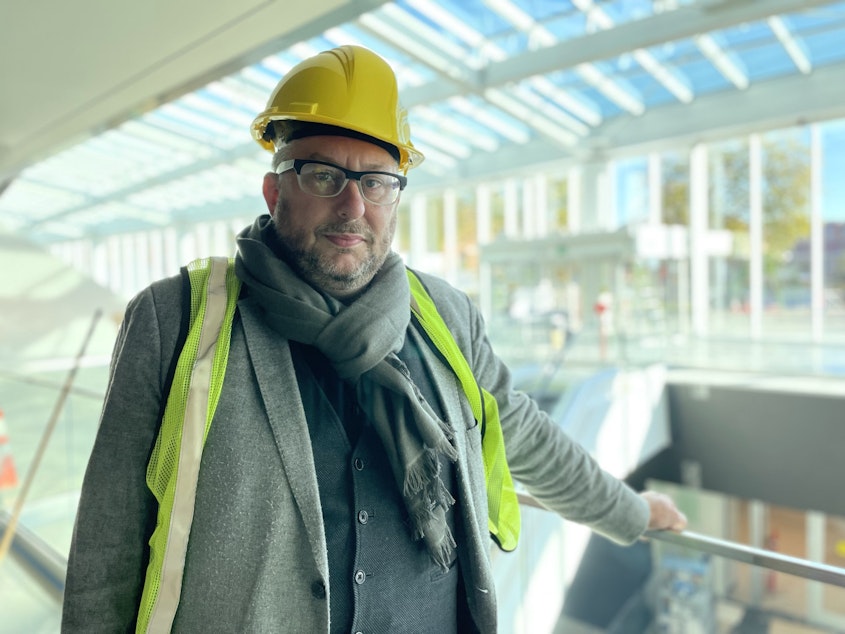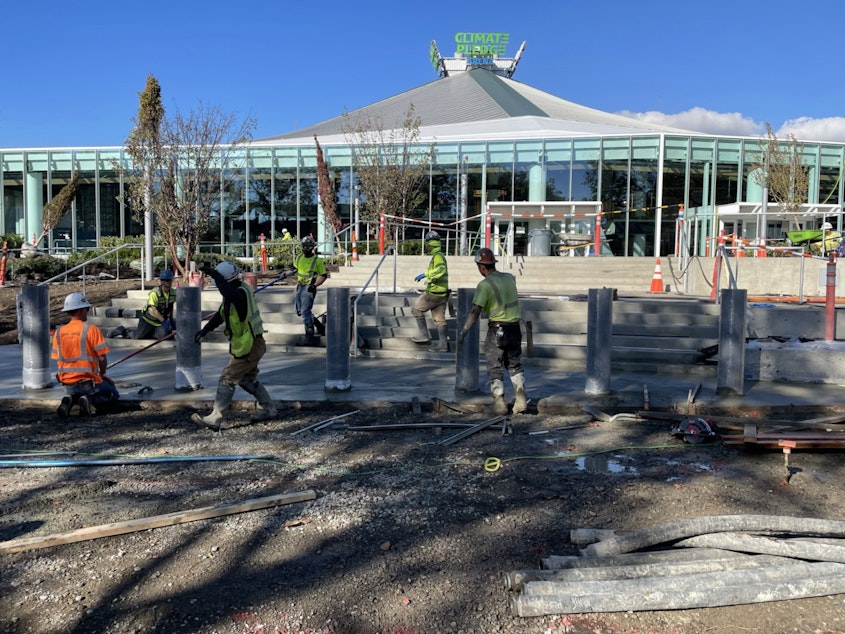Climate Pledge Arena goes on offense with sustainability goals

Most big arenas use lots of fossil fuel to heat and cool the space. They’re energy hogs. But backers of Seattle's Climate Pledge Arena, home to The Kraken and The Storm, say it’ll be the greenest in the world.
We checked into those claims.
Architect Jason McLennan has spent his life working to make buildings more sustainable. He basically invented “living buildings” in 1998, which are buildings inspired by nature, and held accountable to certain goals. They draw energy from the sun and reuse their own rainwater, like a plant does.
McLennan also he grew up playing hockey. His dad almost went pro. This arena let him bring both those passions together.
“I’ve got to say this is actually an important moment for me as we walk out into the arena," he said as he approached the top row from the entrance, looking down at the rink. "This is the first time I’ve seen the ice revealed since I’ve been here. So it’s a bit of a moment."
“One of the things that makes this ice so special is where the water comes from, to make the ice," McLennan said. "And what we’re doing at the Climate Pledge Arena is we’re collecting water from the roof, that falls naturally: rainfall, what we’re famous for in Seattle.”
The water flows through a system of gutters and pipes into a 15,000 gallon underground tank. From there, it’s pumped and filtered whenever it’s needed to build up a new ice rink floor or to feed the Zamboni.
Sponsored
This building is full of little details like that. Added together, they helped Climate Pledge Arena qualify for certification as the first carbon zero arena in the world. It doesn’t use any fossil fuels. It offsets any carbon dioxide it produces. And by 2024 (when it ditches all single-use plastics), almost all its waste will be recycled or composted.

McLennan says all the sustainability calculations will be published online, every year.
“I think that’s an incredibly important thing – that people can call us on it.”
Climate Pledge Arena
Sponsored
Amazon bought the naming rights to the arena. But instead of calling it Amazon Arena, the company used the name to highlight their “Climate Pledge.”
I wanted to know if the claims about this arena are just "greenwash," a big marketing stunt. So I asked a couple faculty members at the University of Washington College of Built Environments. They gave two different responses.

Kate Simonen is the Chair of the Architecture school, and she runs something called the Carbon Leadership Forum. She’s spent years pushing organizations to take their sustainability goals seriously. She says Climate Pledge Arena is like a dream come true.
“Oh, I feel excited. I feel really excited. I mean, the commitment to net zero by 2040 is where everybody needs to be going. And so to have a major – what I would almost consider a public resource – attacking the challenge so aggressively, is wonderful," she said.
Sponsored
Simonen said the new arena sets a new standard.
“Everybody needs to meet this standard. You know, we have a growing awareness of the importance of action on climate. There’s things that need to be done in the next 10 to 20 to 30 years – and that really means now. Although in some ways it may seem I said it’s rare, and that they’re a leader, it is what we all should be doing.”
But upstairs from Simonen's office, Manish Chalanah has a different opinion.

Chalanah is with the Department of Urban Planning. He’s a little less excited.
Sponsored
“It’s a narrow way of thinking about sustainability," he said. "And I’m not being overcritical as to what they’re doing. It’s good. It’s good to be thinking about environmental sustainability, there’s no doubt about that.”
But Chalanah says real sustainability is a three legged stool. In Seattle, we do a good job talking about one leg of that stool: environmental sustainability. But we’re less focused on the other two legs: Social sustainability and economic sustainability.
Chalanah said it's those last two factors that "create good societies for the well being of people who inhabit the city. I want projects like this to address all three pillars of sustainability before they can make that claim that they’re truly sustainable.”
Take economics, for example. It’s true, the backers of this building spent around a billion dollars of their own money to remodel it. And the lack of cost to taxpayers upfront is one of the most frequently cited parts of the arena's origin story. But Chalanah argues that in the end, the building is publicly owned, and he thinks the public is giving away too much of its future profits.
Sponsored
Rob Johnson disagrees. He’s a former city council member who now works for the Kraken. He said consider the way things are usually done.
“Traditionally a sports team owner comes to a city, or a local government, says 'I want to keep my team here. But in order to keep my team here, I need hundreds of millions of dollars in municipal bonds or other financing in order to upgrade my building so we can stay competitive. And then, I’m going to keep 100% of the profits of that facility.'”
Johnson said this arena flipped that approach on its head. It created a public building using private money, and the city gets a share of future profits.
“Some advertising revenue, the parking revenue,” Johnson said.
It may take years to fully understand whether Climate Pledge Arena was as good a deal as we’re being told.
But in the meantime, it’s definitely raising the bar for the environmental sustainability of big construction projects.

